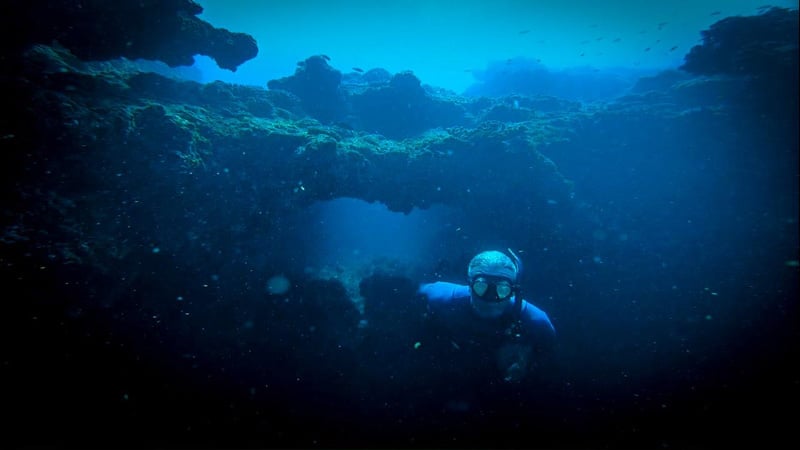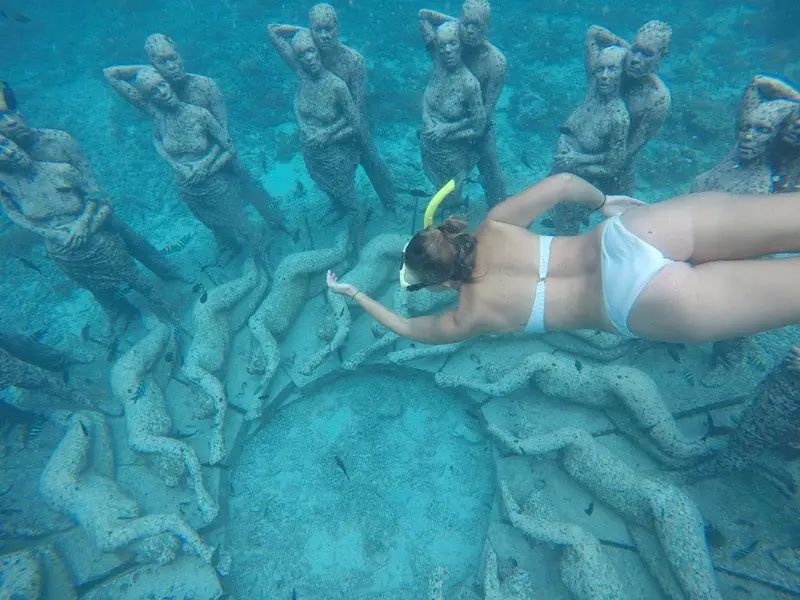While your surf spots might change, there are a few things that stay the same. You need your board (duh!), your boardies, or wetsuit (for most), and you need to be able to hold your breath.
Breath-hold training is a fantastic way to improve your surfing and experience in the water. A breath holding training course also makes for the perfect gift for surfers. Creative gift-giving is thoughtful, especially if it turns out to be something your loved one didn’t even know they needed.

Image credit: Roland Albertson and John Pringle
How do you improve holding your breath? We’re going to dive (or turtle roll) into the best tips and tricks to increase breath-hold. More lung capacity means less fatigue and more time cruising waves. Cowabunga!
There are a couple of instances when we recommend practicing breath-holding with a buddy. Even better, we highly recommend signing up for a breath-holding course.
* Just to let you know that this article contains affiliate links. If you click on them we might receive a small commission, at no extra cost to you
Contents
Why Breath Holding Techniques are Important in Surfing
One of the reasons the ocean is loved is for her unpredictability. The ocean’s ever-changing nature has drawn people in for centuries. It is also the reason why you should prepare for harsh conditions.
Whether you are big wave training or aware of rips and currents in your local area, breath-holding could save your life in unexpected situations.
Improving your lung capacity also allows you to branch out into other ocean activities. For example, freediving is becoming increasingly popular. Improved breath-holding will allow you to explore more than just the waves, but life under the surface too.
How to Increase Your Breath Hold
There are many things to consider when breath-hold training. It is important to always be safe and know your limits before starting any exercise or training. How do you know your limits before starting? Keep reading to find out.
How Long Should You Be Able to Hold Your Breath for?
Breath-holding ability varies from person to person. Don’t put too much pressure on yourself or expect your body to become Aquaman overnight. Evaluate what you are currently able to do. Practice consistently and make sure you enjoy it. Everything is easier when you’re having fun.
Dry Breath Holding
The first step to improving your lung capacity and holding your breath is knowing what you’re working with. Dry breath-holding is when you practice holding your breath out of the water. It is safer to practice this way when first starting. It will allow you to figure out where your starting point is.
Sit comfortably on the couch or in a chair. You can also lie on your bed if you prefer. Inhale and exhale calmly. Breathe as you normally would without altering your breath for two minutes.
After two minutes, inhale deeply, exhale everything out, and take another deep inhale. Start timing yourself on your phone.
Try and relax and allow your mind to wander and think of other things. Once you can’t manage anymore, begin to breathe deeply again, and stop timing yourself. Focus on your inhales to keep yourself from feeling panicked.
Using your recorded time, you can make a fair assumption about realistic timing.
After a month of training, as a daily practice, your initial recorded time should improve along these lines:
- <1 minute = 3 minutes
- +- 1:30 minutes = 4 minutes
- +2 minutes = 5 minutes
Fun fact: Dry training is 10-20% more difficult than in the water.
Although this practice is safer than in the water it can still be dangerous. Make sure you have a buddy with you.
Even better yet, is to do a breath-holding course led by a professional. The Ocean Warrior course is led by professional big wave surfer, Mark Visser.

Image credit: Roland Albertson and John Pringle
Work On How to Hold Your Breath Longer
The trick to this practice is to relax. Zoolander had it spot on playing ‘relax, don’t do it’ on repeat. It is key to relax your muscles, mind, and breath. Hyperventilation, rapid breathing, is not the goal here.
Focus your attention on holding your breath without any air escaping. Attention should be brought to holding the air in at the back of your throat rather than at the lips.
Using mantras and mindfulness that you learn in other practices, like meditation and yoga, are extremely helpful when breath-holding.
Ultimately you want to train your body to deal with high carbon dioxide levels and perform optimally with low oxygen levels. These high CO2 levels result in that strong desire to breathe – the burning sensation.
Wet sessions, to adjust to a watery environment, should only be done with a buddy and after you have done a course.
It is important to practice both anaerobic (without air) and aerobic (with air) training. Anaerobic training is high energy-intensive workouts. The purpose of this training is to push your muscles to burn phosphates and glycogen instead of oxygen (without air).
Aerobic training, endurance-based training, teaches your body to use oxygen more efficiently. In this case, the body is using oxygen (with air), instead of phosphates, to fuel itself.
Using Apnea Tables to Practice How to Hold Breath Longer
Your breath-holding goal is to perform with low oxygen consumption and lessen your body’s CO2 production. Apnea tables are exercise tables that help improve your body’s tolerance to carbon dioxide. Simultaneously, you practice decreasing your rest time between continuous breath holds.
You can find these tables online or make one yourself. Again, practicing breath-holding can be dangerous. It should always be done with someone accompanying you. It is highly recommended to do a course to ensure your own safety.
Big Wave Surf Training
Big wave surfing is its own beast. It feels like it’s its own sport. Chasing those perfect winter swells is not for the faint-hearted. If you have surfed in Portugal, Chile, Hawaii, or California you might have encountered these huge waves.
These colossal waves are for adrenaline junkies. Riding them is no casual matter. They can end a life quickly. Breath-holding is a part of the extensive training of professional big wave surfers.

Image credit: Roland Albertson and John Pringle
Final Thoughts on Breath Holding in Surfing
Surfing is so much more than a sport. However, like any high-performance sport, surfing gets better with training. Breath-holding is part of this training that makes catching waves that much more enjoyable. It is also extremely important for safety.
Surfing different spots around the world is epic. But, it’s a lot less fun when your fitness only allows you to surf two waves before being knackered. Breath-holding is an amazing practice to increase your performance.
Generated with Pin Generator




